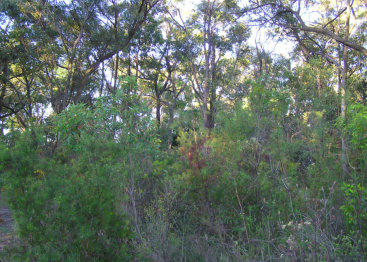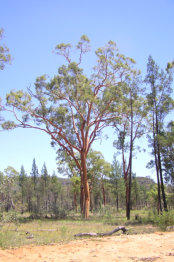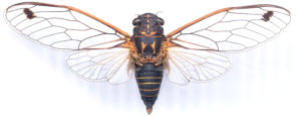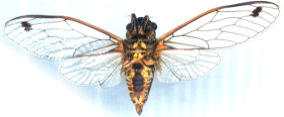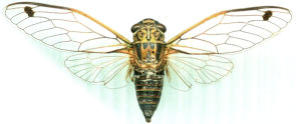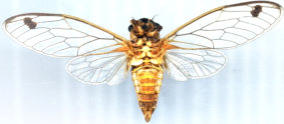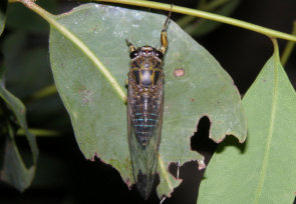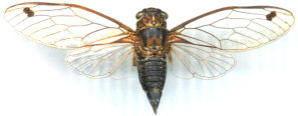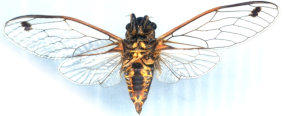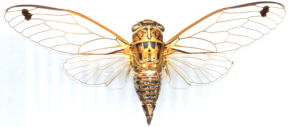
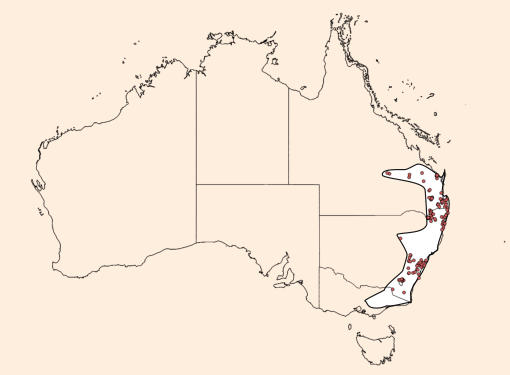
Double-spotted Cicada
Galanga labeculata (Distant, 1892)
© Popple Creative Industries 2014–2025
Male
Female
Previously referred to as Cicadetta
labeculata.
Other name(s):
Spotted Wattle Cicada.
Species number (TNS):
184–187.
Fore wing length:
19–30 mm.
Distribution and seasonality:
Coastal, subcoastal and forested inland
areas high rainfall areas from the
Blackdown Tableland and Kroombit Tops in
Queensland coastally and subcoastally
south through New South Wales and
Australian Captial Territory to north-eastern
Victoria. It occurs patchily around Greater
Brisbane, but is prolific in the Sydney area.
Adults are present from September to April.
Notable localities:
Fraser Island, North Stradbroke Island,
Stanthorpe, Sydney, Bowral, Canberra.
Habitat:
Populations occur in sclerophyll forests and
heath vegetation, where adults typically
occur on wattles (Acacia spp.), but
sometimes also on eucalypts. Where this
species is prolific, it may also occur in
suburban gardens (e.g. Sydney and
Canberra).
Calling song and behaviour:
The day song of this species includes a long
buzz that increases in pitch for a period of
about 5-10 seconds. It then ends with an
abrupt "tick" and sometimes the individual
will produce a shorter buzz followed by the
same tick again over about half a second
duration. Singing normally occurs every 30
seconds to 5 minutes depending on the time
of day and density of males. The dusk call is
a monotonous buzzing punctuated by a
series of clicks. It sounds quite unlike the
day song even though its pitch and tone are
the same. Adults prefer to sit on the main
trunks and branches. They tend to be fairly
static but may move after singing a bout of
their full song phrase.
Colour variation:
Colour varies within and between
populations from almost black with orange
or brown markings, to mostly orange brown
or medium brown. Some individuals in
coastal localities have blue intersegmental
membranes (i.e. blue rings) on the
abdomen. All have distinctive spots on the
fore wings, although the ‘double-spot’ can
often be fused into a single spot.
Similar species:
Gelidea torrida species complex (Victoria
and Tasmania). Also check genus Kobonga.


dr-pop.net database record
Currently known extent

Habitat
